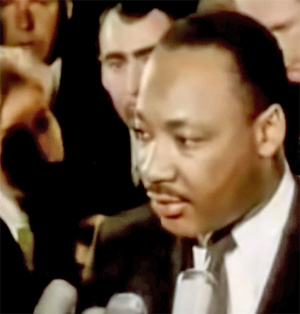
Martin Luther King Jr.
Whenever President Donald Trump — or any political leader — stands up to condemn all of the violence at a national tragedy such as Charlottesville, Va. regardless of the causes, political or otherwise, those calls should be embraced, lest the result be that some forms of political violence be justified — and perpetuated as a consequence.
That was what Dr. Martin Luther King, Jr. preached. He said, “Hate begets hate; violence begets violence; toughness begets a greater toughness. We must meet the forces of hate with the power of love… Our aim must never be to defeat or humiliate the white man, but to win his friendship and understanding.”
King deplored the violence on all sides of the national pursuit of racial equality. In his book, “Where do we go from here: Chaos or community?” King condemned the “terror of extremist white violence” and at the same time gave a equal share of the blame for violence to those who resorted to riots to end racial oppression and segregation: “in several Northern and Western cities, most tragically in Watts, young Negroes had exploded in violence. In an irrational burst of rage they had sought to say something, but the flames had blackened both themselves and their oppressors.”
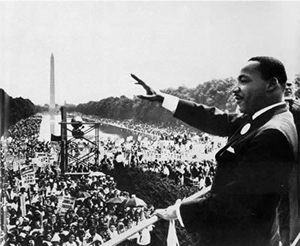 While King understood why the riots occurred — he called them the “language of the unheard” — and yet he did not justify them, instead saying, “riots are socially destructive and self-defeating” and “there’s no practical or moral answer in the realm of violence” and “there is no violent solution” to social injustices.
While King understood why the riots occurred — he called them the “language of the unheard” — and yet he did not justify them, instead saying, “riots are socially destructive and self-defeating” and “there’s no practical or moral answer in the realm of violence” and “there is no violent solution” to social injustices.
Was King morally equating those who perpetuated racial injustice and those who opposed it, as Trump is now accused? No. But he was saying resorting to violence to achieve political ends, regardless of the motive, was unquestionably immoral, even in the pursuit of racial justice. That is all.
But it was not simply a message of non-violence as its own end. King never lost sight of his goals: “it is not enough for me to stand before you tonight and condemn riots. It would be morally irresponsible for me to do that without, at the same time, condemning the contingent, intolerable conditions that exist in our society.” He urged legislation via our political institutions, not physical confrontation, to resolve the evils of segregation.
King was being the adult in the room. He was right. While the nation was tearing itself apart over a true injustice, government-forced racial segregation, he pursued non-violent, political means to achieve the changes he sought. In the face of racial violence, he preached a non-violent response. He kept the moral high ground. His view was that violence would only lead to more violence, and so brokered no quarter for those who resorted to it — whether they were fighting for or against racial injustice.
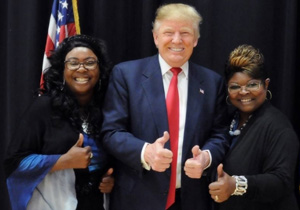
Diamond and Silk with Donald Trump
At question today is whether President Trump should have condemned not only the violence in Charlottesville, Va. perpetrated by hateful white supremacists attending the rally opposing the removal of a statue of Confederate general Robert E. Lee — including the tragic murder of Heather Heyer by James Fields — but also the anti-fascists (“Antifa”) counter-protesters who attended and engaged in street fights with the protesters.
On Twitter on Aug. 12, Trump deplored the violence, writing in his first response to the tragedy at 1:19 p.m., “We ALL must be united [and] condemn all that hate stands for. There is no place for this kind of violence in America. [Let’s] come together as one!”
Later in the day, he said at a speech in Bedminster, N.J. at 3:33 p.m., “we’re closely following the terrible events unfolding in Charlottesville, Virginia. We condemn in the strongest possible terms this egregious display of hatred, bigotry and violence, on many sides. On many sides. It’s been going on for a long time in our country. Not Donald Trump, not Barack Obama. This has been going on for a long, long time. It has no place in America. What is vital now is a swift restoration of law and order and the protection of innocent lives. No citizen should ever fear for their safety and security in our society, and no child should ever be afraid to go outside and play, or be with their parents, and have a good time.”
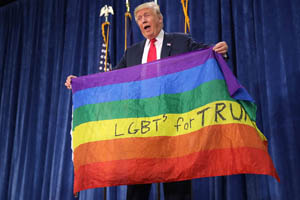 Here, Trump had condemned all of the violence that occurred at the event including the murder by Fields and the violence between the protesters and the counter-protesters — and was roundly condemned, apparently by those who prefer some forms of violence over others.
Here, Trump had condemned all of the violence that occurred at the event including the murder by Fields and the violence between the protesters and the counter-protesters — and was roundly condemned, apparently by those who prefer some forms of violence over others.
To be clear, based on Charlottesville court records, attendees from both sides of the protest were arrested for assault and other charges, including Fields. For example, Troy Dunigan, was arrested for throwing objects at the Nazi protesters. Jacob Leigh Smith was arrested for attacking a journalist.
Journalist Sheryl Gay Stolberg reported violence on both sides on Twitter on Aug. 12, “The hard left seemed as hate-filled as alt-right. I saw club-wielding ‘Antifa’ beating white nationalists being led out of the park.”
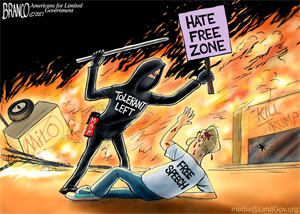 So, indisputably, there was violence on both sides, neither of which can be justified, and Trump condemned it all. So too would have King, who lived through far worse, and through it all condemned all of the violence, even the violence that was committed on his cause’s behalf.
So, indisputably, there was violence on both sides, neither of which can be justified, and Trump condemned it all. So too would have King, who lived through far worse, and through it all condemned all of the violence, even the violence that was committed on his cause’s behalf.
That is not to paint Trump as some sort of pacifist or advocate of non-violent resistance. He’s not. Not at all. But neither is he irresponsible to abhor the violence of Charlottesville — all of it — and urge all sides to stand down. He has a responsibility to restore civil order.
That is a demonstration of leadership at an extremely difficult moment. That is not always the popular path, the expedient one. King too was criticized in his lifetime by those who thought violence was warranted. But sometimes leadership means doing what others are afraid to do. King stood above it all, saying, “Violence as a way of achieving racial justice is both impractical and immoral… Violence is impractical because it is a descending spiral ending in destruction for all. It is immoral because it seeks to humiliate the opponent rather than win his understanding: it seeks to annihilate rather than convert. Violence is immoral because it thrives on hatred rather than love. It destroys community and makes brotherhood impossible. It leaves society in monologue rather than dialogue. Violence ends up defeating itself. It creates bitterness in the survivors and brutality in the destroyers.”
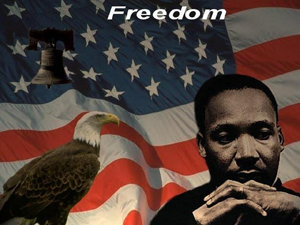 It also happens to be the law, where regardless of motive, physical violence cannot be tolerated except in self-defense. What if Trump had done the opposite and condemned the criminal violence of some while condoning the violence of others? Surely, the easy path would be to ignore those who attacked attendees of the Charlottesville protest, and simply focus on Fields’ murder.
It also happens to be the law, where regardless of motive, physical violence cannot be tolerated except in self-defense. What if Trump had done the opposite and condemned the criminal violence of some while condoning the violence of others? Surely, the easy path would be to ignore those who attacked attendees of the Charlottesville protest, and simply focus on Fields’ murder.
But as the nation’s foremost law enforcement officer, Trump, the head of the executive branch, the President is obligated to apply the law equally. A police officer would have to behave no differently. White supremacist or Antifa, if you get violent, you’re going to jail. That is the law, and the President is supposed to enforce the law and set an example for all Americans — those with whom he agrees and disagrees. It would be irresponsible and wrong to condone instigating violence, taking matters into one’s own hands, whether against an anti-fascist or a Nazi.
At a very horrible moment in our history, on Aug. 12, the President demonstrated moral clarity. He wrote on Twitter at 5:19 p.m., “We must remember this truth: No matter our color, creed, religion or political party, we are ALL AMERICANS FIRST.” He later expressed condolences to the family of Heyer, and also of the officers who were killed in the line of duty in Charlottesville.
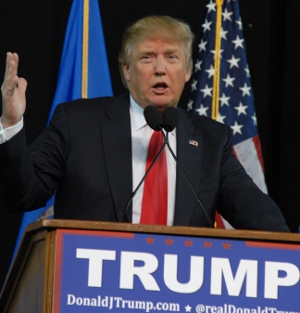
Donald Trump in Tulsa. Photo: Greg Duke, Tulsa Today
On Aug. 14, at the White House, Trump made an additional speech announcing a Justice Department civil rights investigation into the violence, stating, “No matter the color of our skin, we all live under the same laws, we all salute the same great flag, and we are all made by the same almighty God. We must love each other, show affection for each other, and unite together in condemnation of hatred, bigotry, and violence. We must rediscover the bonds of love and loyalty that bring us together as Americans. Racism is evil. And those who cause violence in its name are criminals and thugs, including the KKK, neo-Nazis, white supremacists, and other hate groups that are repugnant to everything we hold dear as Americans. We are a nation founded on the truth that all of us are created equal. We are equal in the eyes of our Creator. We are equal under the law. And we are equal under our Constitution. Those who spread violence in the name of bigotry strike at the very core of America.”
Then on Aug. 15, at Trump Tower in New York City, Trump again blamed “both sides” for the violence, saying, “You had a group on one side and you had a group on the other and they came at each other with clubs and it was vicious…”
These messages are all consistent. They speak of restoring law and order, rejecting hatred and bigotry and nationally uniting against what is becoming a scourge of political violence. It could get worse from here. Much worse. And through it all, the only way it will stop is when those resorting to violence — all sides — lay down their arms.
The issue of what to do with Confederate statues can be dealt with at the local, state and federal levels depending on where they are located by institutions that we all can participate in. That is the proper venue for resolving these disputes, not violence.
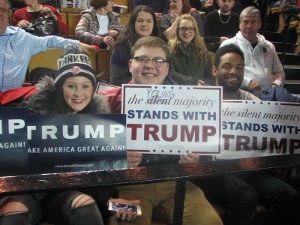
Tulsa Trump Supporters. Photo by David Arnett.
Trump, like King, was intoning emphatically against political violence in all of its forms, working within the framework of our political institutions to achieve change and standing up for the civil society.
What are you standing for?
About the author: Robert Romano is the Vice President of Public Policy of Americans for Limited Government.
